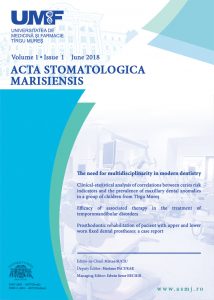Introduction: To achieve a proper disinfection of the root canal system, besides many irrigant solutions, laser has become increasingly popular in recent years. Bacteria that penetrate deep in the dentine can be destroyed by laser up to 1150 μm. The aim of the study is to investigate and to compare the efficiency of conventional chemical disinfection using cleaning solutions – sodium hypochlorite (2%), citric acid (20%) – and the physical disinfection using a diode laser (940 nm, 1 W) in vitro using extracted teeth. Material and Methods: 23 intact, single rooted teeth were prepared and inoculated with Enterococcus Faecalis. Afterwards samples were taken from each group and placed on solid mediums. The following were applied to members of each group prior to sampling: 2% sodium hypochlorite, 20% citric acid and diode laser (940 nm, 1W). To evaluate the results, so that the bacterial strains on the medium could be counted, quenches were performed from 1/10 and 1/100 dilutions. Statistical analysis was performed using Kruskall-Wallis and unpaired T-test with a value of p>0.05. Results: Statistical analysis on the 3 groups (NaOCl, citric acid, and diode laser) showed significant differences between the counted remaining colonies after disinfection. Conclusions: The diode laser used for disinfection under the used settings is not effective enough, but as an adjuvant, associated with conventional irrigation effective disinfection can be obtained.
Andrea-Csinszka Kovács-Ivácson 1, Alexandra-Mihaela Stoica 1, Örs Bodó 2, Timea Dakó 1, Monica Monea 1
1 George Emil Palade University of Medicine, Pharmacy, Science, and Technology of Târgu-Mureș, Romania
2 Oral and Maxillofacial Surgery Clinic, County Emergency Clinical Hospital of Târgu Mureș, Romania
1 George Emil Palade University of Medicine, Pharmacy, Science, and Technology of Târgu-Mureș, Romania
2 Oral and Maxillofacial Surgery Clinic, County Emergency Clinical Hospital of Târgu Mureș, Romania

Comments are closed.